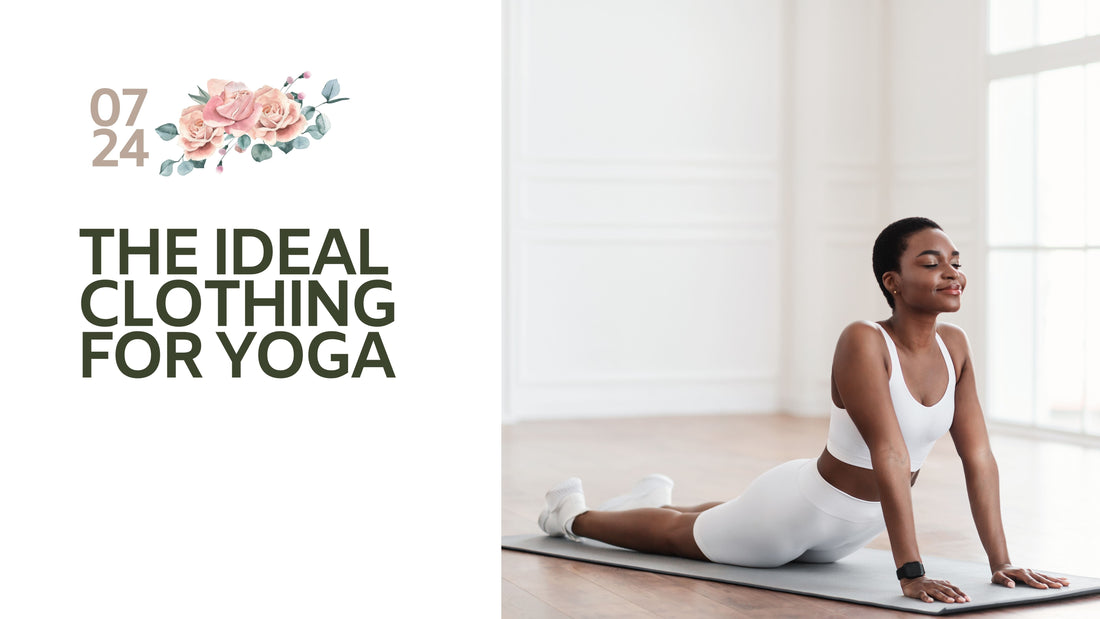Yoga, a practice that unites the mind, body, and spirit, is best enjoyed in clothing that complements its serene yet challenging nature. Choosing the right yoga attire can enhance your practice by providing comfort, flexibility, and support. Let's explore the ideal clothing for yoga, delve into traditional yoga wear, discuss whether leggings are a necessity, and consider the best options for outdoor yoga sessions.
What is the Ideal Clothing for Yoga?
The ideal yoga clothing should prioritize three main aspects: comfort, flexibility, and breathability.
Comfort: Yoga involves a wide range of movements, including stretches, bends, and twists. Clothing should be comfortable enough to allow these movements without causing discomfort or distraction. Soft, non-restrictive fabrics like cotton, bamboo, or technical materials designed for active wear are great choices.
Flexibility: Given the dynamic movements in yoga, your clothing should be flexible. This means choosing garments that stretch and move with your body. Materials with spandex or elastane can provide the needed flexibility.
Breathability: Yoga can be a sweaty endeavour, especially in heated styles like Bikram or Vinyasa. Breathable, moisture-wicking fabrics help keep you cool and dry throughout your practice. Look for materials specifically designed to wick away sweat and allow your skin to breathe.
What is Traditionally Worn for Yoga?
Traditionally, yoga attire has roots in the cultural and historical context of India, where the practice originated.
Dhoti: In ancient times, Indian yogis often wore a dhoti, a long piece of cloth tied around the waist and legs. This garment allowed for ease of movement and ventilation, suitable for the meditative and physical aspects of yoga.
Kurta: A kurta, a loose-fitting tunic, is another traditional garment worn by practitioners. It provides comfort and allows for free movement while maintaining modesty.
Sari: Some women in India practice yoga in a sari, a long piece of fabric draped around the body. While not as common in modern practice, it is still seen in some traditional settings.
Do You Have to Wear Leggings for Yoga?
Leggings are a popular choice for modern yoga practitioners due to their comfort, flexibility, and supportive fit. However, they are not mandatory.
Leggings: These are form-fitting, stretchy pants that move with your body, making them ideal for yoga. They come in various lengths, from full-length to capris, and are often made from moisture-wicking materials.
Alternative options:
Shorts: For hot yoga or outdoor sessions in warm weather, shorts can be a good option. Look for styles that provide adequate coverage and stay in place during movements.
Track Pants: Some practitioners prefer track pants or joggers, which are comfortable and offer a looser fit while still allowing for movement.
What to Wear for Outdoor Yoga?
Practicing yoga outdoors adds another layer of considerations, mainly revolving around weather conditions and terrain.
Weather-appropriate clothing:
Warm Weather: Lightweight, breathable fabrics are key. Opt for moisture-wicking materials to stay cool and dry. A tank top or a lightweight tee paired with shorts or capris can be ideal.
Cool Weather: Layering is essential. Start with a moisture-wicking base layer, add a long-sleeve top or lightweight sweater, and consider a windbreaker or light jacket. Full-length leggings or yoga pants will help keep you warm.
Sun Protection: If you’re practicing in the sun, consider wearing a hat or visor and applying sunscreen to exposed skin. Some clothing lines offer UV-protective materials.
Footwear: While yoga is typically practiced barefoot, outdoor settings might require foot protection. Consider yoga socks with grips or lightweight, flexible shoes designed for minimal interference with your practice.
Ground Protection: Bring a yoga mat to provide cushioning and a clean surface.
Choosing the right clothing for yoga involves balancing comfort, flexibility, and the specific needs of your practice environment. While leggings and modern activewear are popular choices, traditional garments like dhotis and kurtas also have their place in yoga history. Ultimately, the best attire is what makes you feel comfortable and confident, allowing you to focus on your practice. Whether indoors or outdoors, your clothing should support your movements and contribute to a mindful, enjoyable yoga experience.
Related articles
The Top 10 Fascinating Facts About Leggings
Styling Tips: What To Wear With Yoga Pants

